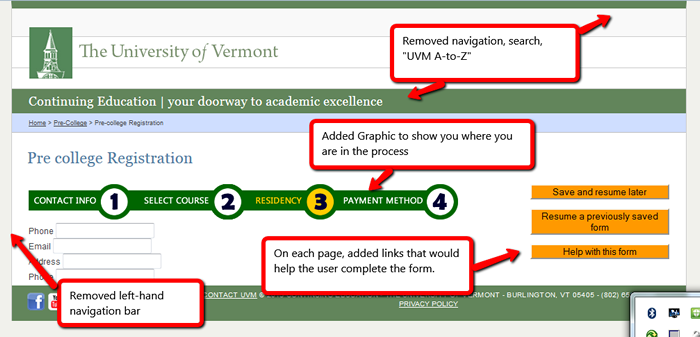
University of Vermont Continuing Education recruits and registers students for several programs that serve non-traditional student audiences. Several of these programs require completion of a lengthy application form. According to usage statistics, the abandonment rate for this form is an incredible 88%. 88 out of 100 users who land on the application form leave before the have completed it. The top 10 fields where they abandon it are as follows:
Applicant's Signature/Date |
10.38% |
City |
8.61% |
Last Name |
8.35% |
Zip Code/Postal Code |
7.05% |
6.95% |
|
Permanent Exchange and number |
4.84% |
Where is Your Parent/Guardian's True, Fixed and Permanent Address |
4.75% |
Are you a US Citizen? |
4.23% |
How will this experience fit with your personal and academic goals? |
4.19% |
Address 1 |
3.49% |
It’s notable that items 2-6 total 36% of all the abandons, and are all within the first part of the form. This suggests that over ⅓ of all users stop quickly after starting.
To address this, I’ve made the form into a multi-stage experience. First, the user gives their contact information. A hidden field in this form records the academic program that they are applying for. They can then either progress to the next page to complete the form, or save and return later. Even if they abandon altogether, we can reach out to them to see why they abandoned and hopefully rectify the situation.
As the builder of this page, there several constraints that may not be apparent to the user. First, this data must load to banner. In order for it to load to banner, there must be a way to check for duplicates. This is why we need items like Social Security Number, former name, etc.
Here are the items that I modified:
